|
October is a beautiful time of year filled with fall festivals, hayrides, and dazzling mum displays. The trees are bursting with color, and the crisp smell of autumn is in the air. It is also Halloween month, a holiday that is enjoyed and celebrated by both young and old. There are pumpkins to carve, costumes to make, parties to plan, and of course, let’s not forget scary haunted houses, spooky trails, and ghost tours! Halloween is also a time for lots of fun creativity in the kitchen and making many delectable treats for children. Of course, adults enjoy holiday treats as well, especially beverages. If pumpkin lattes and hot apple cider aren’t your thing, there are more “spirited” Halloween-themed drinks such as Poison Apple Cocktail, Boozy Witch’s Brew. Black Devil Martini and Zombie Slime Shooters! But if you prefer sipping wine, please step into my "Hallowine" cellar, if you dare, and I’ll tell you a few tales! Casillero del Diablo Once there was a winemaker named Don Melchor Concha y Toro who founded the Concha y Toro winery in Chile in 1883. He started his winery with grape varieties that he brought back to Chile from the Bordeaux region of France, with which he made exquisite wines. Don Melchor reserved an exclusive batch of these wines for himself that he kept under lock and key. According to legend, these wines continually disappeared from the cellar. So to stop the theft of these wines, Don Melchor spread a rumor that the devil himself lived in the cellar guarding the wines. Everyone became terrified, and some people claimed that they had seen the devil. The rumor worked, the thefts stopped, and Don Melchor continued to enjoy his wines. To this day, the cellar is known as the “The Devil’s Cellar” and remains protected…forever! Casillero del Diablo, which means “devil’s locker” in Spanish, is a legendary brand that is part of Concha y Toro’s portfolio with the “devil” logo on every bottle. The cellar is located in Pirque, close to Santiago, and is open for tours. Here are two wines from Casillero del Diablo to add some devilish fun to your Halloween. Casillero del Diablo Reserva Red Blend DO 2018 The grapes for this red wine are a mysterious blend of Syrah and Cabernet Sauvignon sourced from Rapel Valley. The wine is shrouded in secrecy about its length of aging, but rumor has it that it spent about ten months in French oak. But there is no mystery as to this wine’s aromas and taste! Nose: Dark berries, black cherry, fig, spice, and vanilla Palate: Juicy plum, dark cherry, spice, dark chocolate, and soft tannins Alcohol: 13.5% SRP: $11.99 Pair with grilled meat, game, seared tuna, hearty stews, and pasta. Casillero del Diablo Reserva Cabernet Sauvignon 2019 The grapes for this wine are sourced from Central Valley D.O. Its aging remains a secret closely guarded by the devil in the cellar! Nose: Intense aromas of dark berries, cherries, plum, floral, and spice. Palate: Aromas spill onto the palate with a touch of anise. It is beautifully balanced with firm tannins and dark chocolate and plum lingering on a long finish. Alcohol: 13.5% SRP: $11.99 Pair with hearty or spicy cuisine, grilled meat, aged cheese, or stews. Flora Springs Flora Springs is a family-run winery located in Napa Valley, CA, founded in 1978 by Jerry and Flora Komes. Today, their son John and daughter Julie are the proprietors of the estate, and Julie’s husband, Pat Garvey, is the vineyard director and proprietor. The property is situated among vineyards planted in the late 1800s, now part of the estate vineyards. When the Komes bought the estate, it came with a “Ghost Winery.” originally constructed in 1885. “Ghost Winery” is a term used to describe any winery between 1860 and 1900 that was non-functional and in disrepair in the early 20th century due to the Great Depression, phylloxera, and Prohibition. According to Flora Springs, “Before 1919, when Prohibition began, there were an estimated 713 winery businesses in California. Following its repeal 14 years later, only 40 wineries were left. This resulted in a wave of abandoned wineries throughout the next several decades. Many wineries of the time disappeared forever; others were left in ruins.” After his parents bought the property, John completely renovated the old stone winery into a home and lives there with his wife, Carrie. In honor of Flora Springs history, every year around Halloween time, they bottle a small amount of estate-grown Malbec from the vines in front of the old winery as a tribute to the estate’s “ghostly history.” The label is a hand-drawn etching of the historic stone cellar. Ghost Winery Malbec 2019 This wine is 100% Malbec and aged 18 months in French (75%) and American (25%) oak barrels. Nose: Plum, cherry, berries, baking spice, and figs Palate: Lush dark berries, black plum, cocoa, fig, spice, silky tannins, and a long finish. Flora Springs says, “It’s hauntingly delicious.” Alcohol: 14.2% SRP: $60 Pair with stews, hearty soups, grilled meat, seared tuna, or aged cheese. In addition to the Ghost Winery Malbec, Flora Springs produces a one-of-a-kind Halloween-themed label and limited edition wine. Every year since 2008, consumers look forward to these whimsical Halloween wine bottles. This year, General manager and third-generation Nat Komes collaborated with New York-based artist Marc Sasso to create the All Hallows’ Eve Cabernet Franc label. The result is an image of witches dancing in the moonlight while brewing a special potion. Hmm, I wonder what that could be! All Hallows’ Eve Cabernet Franc 2019 The grapes for this 100% Cabernet Franc are sourced from a small block of the family’s estate vineyard in Rutherford. It is aged 18 months in French (80%) and American (20%) oak barrels. Nose: Red fruit, baking spice, cherry, and a hint of floral. Palate: Juicy notes of black raspberry, dark cherry, chocolate, spice, and a touch of sour cherry on a long finish. It is a balanced and well-structured wine. Alcohol: 14.2% SRP: $60 Pair with grilled meat, fowl, seared tuna, or a Halloween chocolate treat! And what would Halloween be without adding a little “magical” sparkle to the festivities? Bottega SpA Bottega SpA is headquartered in Bibano, Treviso, in the Veneto region of northern Italy. It is here that the company produces Prosecco DOC and grappa. In addition, they have another winery in Conegliano for the production of Prosecco DOCG. Bottega also manages wineries in Valpolicella and Montalcino. Bottega’s motto is “Fatto A Mano,” which means ‘handmade.” Its mission is to work and achieve the highest levels of quality, design, and sustainability. All of the bottles are beautifully designed and made of hand-blown Venetian glass in Bottega’s glass factory. Academia Prosecco Rainbow Collection is a brand that celebrates the art of Venetian glassmaking and the city’s festive carnival atmosphere. Each colorful bottle of this collection contains Prosecco DOC. There are many colors to choose from, and the bottles can be combined to “create a rainbow of emotions.” In addition, one can mix and match the colors to celebrate specific holidays or events. Bottega SpA has no ghost stories to tell, but they have certainly gotten into the “spirit” of Halloween with their orange and black Halloween pack of Prosecco DOC. Prosecco Spumante DOC Brut
Made with 100% Glera, these grapes are hand-harvested from manually maintained and sustainable vineyards in Treviso Plains. This wine is produced using the Martinotti (Charmat tank) method. Nose: Floral, apples, citrus Palate: Apple, pear, pink grapefruit, and a hint of floral with a creamy mouthfeel, fine bubbles, and apples lingering on the finish. This is a fresh and lively sparkling wine. Alcohol: 11% SRP: $42 (Halloween pack of two) Pair with a charcuterie board, light salads, fish, risotto, or enjoy as an aperitif. Although Halloween is a great time to let one’s imagination run wild and tap into one’s creative spirit, all of these wines need no special occasion to open and enjoy! Whatever you choose to sip on Halloween, I hope you have some juicy ghost stories to pair with it! Happy Hallowine! Cheers! Penina This article was originally published on Santé Magazine. To leave a comment or if you have an inquiry, please contact me at [email protected] When one thinks of wines from the western part of the United States, in all likelihood, California pops up first. However, the Pacific Northwest is also known for its fine wine production from Oregon and Washington. These northerly states benefit from the warm days and cool nights, resulting in ripe fruit and fresh acidity in the wines. Oregon is known for its production of Pinot Noir, and Washington has a reputation for its fine Cabernet Sauvignon, Merlot, Riesling, and Chardonnay. Here are four wines representing both states for your palate to explore. Mack & Schühl, a Miami-based national importer, recently launched United Ink, a new portfolio of wines from the Pacific Northwest, bringing together two of the most acclaimed winemakers, Joe Dobbes (Oregon wine) and David Forsyth (Washington wine). Mach & Schühl said, “Joe and David’s shared philosophy is to showcase the quality of the Pacific Northwest’s wine regions by creating modern versions of the classic wines of the old world.” Each eye-catching label depicts an animal symbolic of that particular region. United Ink Dry Riesling 2020 This wine is 100% Riesling sourced from a single vineyard in the Rattlesnake Hills sub-appellation of Columbia Valley AVA in Washington. Nose: White stone fruit, honeysuckle, and citrus Palate: Fresh acidity, tropical fruit, melon, and is a touch sweeter than the “dry” on the label. Well-balanced though, and the acidity shines through. Drink as an aperitif or pair with seafood, grilled chicken, and veggies. Alcohol: 12% SRP: $12 The label for this wine features a Sockeye salmon found in vast quantities in the Columbia River and its tributaries. United Ink Red Blend 2019 The blend for this wine is 60% Merlot, 20% Syrah, and 20% Cabernet Sauvignon sourced from multiple single vineyards in Columbia Valley’s AVA Horse Heaven Hills and Wahluke Slope sub-appellations. Nose: Cherry, dark berries, and a hint of floral Palate: Dark and sour cherry, blackberry, raspberry, baking spice, and tantalizing acidity with a spicy finish. Pair with grilled meat, barbecue, Asian cuisine, or seared tuna. Alcohol: 14.1% SRP: $18 This label features a Cougar native to the Pacific Northwest. United Ink Cabernet Sauvignon 2019 The grapes for this wine are sourced from single vineyards in Columbia Valley’s AVA Horse Heaven Hills and Wahluke Slope sub-appellations, and the wine is 95% Cabernet Sauvignon and 5% Merlot. Nose: Floral, plum, baking spice Palate: Fresh fruit, plum, baking spice, a hint of tobacco, and medium tannins. Alcohol: 14.1% SRP: $18 Pair with grilled meat, hearty stews, spicy appetizers, or pizza. This label depicts an American Bald Eagle, commonly seen all over Oregon and Washington wine country. United Ink Pinot Noir 2019 This wine is 100% Pinot Noir, with grapes sourced from vineyards in Oregon’s renowned Willamette Valley and Dundee Hills wine appellations. Nose: Cherry, spice, floral, and a hint of anise Palate: Ripe fruit, sweet and sour cherries, dark chocolate, and nicely integrated acidity with smooth tannins and a long finish. Alcohol: 13% SRP: $22 Pair with game, swordfish, cheese, and smoked salmon. This label is of a Black and White Magpie, considered one of the most intelligent birds in the world and found throughout the vineyard regions of Oregon and Washington.
Happy tasting! Until next time… Cheers! Penina To leave a comment or if you have an inquiry, please contact me at [email protected] What happens when three French wine-loving friends decide to produce a unique wine collection? An explosion of flavors in simple but sexy single-serve bottles happens. That’s what! Nicolas Deffrennes, Régis Fanget, and Valérian Déjours, long-time friends, got together, merged their ideas and passion for wine, and created Le Grand Verre. (LGV) (great big glass) Through the wonders of Zoom, I met Nicolas and Régis, along with winery owner Inèz Andrieu of Domaine Caylus and winemaker, Gérald Damidot of Château Val D’Arenc, and enjoyed tasting four of LGV wines. It all began with Nicolas, founder of LGV, whose “eureka moment” came to him when he was a member of a wine club while attending Harvard University. He gained so much knowledge and joy from tasting many different wines that he wanted to give other people the opportunity to experience what he did without opening an entire bottle. So, together with his friends Régis and Valérian, they set out on a mission with the focus of featuring small, independent boutique wineries with an emphasis on quality, organic and sustainable practices, and of course, designing a single-serve bottle for the wine. They toured through France, meeting with many estate owners and winemakers, sampling a lot of wine, and connecting with people. Nicolas said, “We looked for authenticity. The process of choosing winemakers is not just about finding wines that this beautiful little bottle deserves, but it is about the people and connection. It is the authenticity of relationships and products.” Most of the wines crafted for LGV are produced from female-owned estates or female winemakers. The recycled, shatter-proof bottle is double-layered PET that preserves the aromas and flavors. Nick said, “The two layers keep the wine fresh.” Régis added, “The design is elegant but pure and simple. You see the wine, not the bottle.” Each bottle holds 6.3 ounces of wine. LGV Domaine Caylus Rosé Blend 2020 Domaine Caylus is located in the Pays d’ Herault, in the Languedoc-Roussillion region. Inèz Andrieu is a third-generation owner and winemaker of the estate. She converted their 25-acre estate to organic farming in 1999, stressing the importance of preserving the land and lifestyle. The blend for this rosé is 60% Syrah and 40% Grenache from their certified organic vineyards. This wine has wonderful aromas of floral, red berries, and tropical fruit that carries over to the palate with strawberry, cherry, and cream. It is juicy and a delight to sip. Inèz says, “It is rich and concentrated.” And, I agree! Alcohol: 12.5% SRP: $24.99 for a 4-pack LGV Domaine Caylus Chardonnay 2020 This 100% Chardonnay is sourced from Domaine Caylus certified organic vineyards. Inèz said, “This is pure Chardonnay. No oak is used, and it is produced using minimal intervention.” The color is golden with a tinge of green. The nose offers floral, melon, and white stone fruit. Lush notes of white fruit, peach, lemon, and apple satisfy the palate. Just lovely! Alcohol: 13.5% SRP: $24.99 for a 4-pack LGV Château Val D’Arenc Bandol Rosé 2020 Château Val D’Arenc is located in Provence-Alpes-Côte d'Azur region in southeastern France. They have 25 hectares of organic vineyards thanks to the young and innovative winemaker, Gérald Daimidot, who arrived in 2015 and converted the entire estate to organic farming. With 20 years of winemaking experience, Gérald says, “I am a very passionate winemaker. I focus on choosing the best grapes and making food-friendly wines. And this wine is made to pair with gastronomic food.” Gérald takes wine and gastronomy very seriously and recently opened a restaurant! This rosé is a blend of 80% Mourvédre, 10% Grenache, and 10% Cinsault. The Mourvédre gives the wine its beautiful natural color. Aromas of fresh red fruit, melon, citrus and peach segue onto the palate with berries and spice notes. Gérald says, “This wine has a lot of texture and is spicy with pepper.” It also has a beautiful mouthfeel and a long finish. Alcohol: 13.5% SRP: $29.99 for a 4-pack LGV Château Peyredon Haut-Médoc Cru Bourgeois 2019 Château Peyredon is located in Haut-Médoc on the Left Bank in Bordeaux. It is owned by Stéphane & Laurence Dupuch. They are committed to organic farming and preservation of the land. This is a classic Bordeaux blend of 63% Cabernet Sauvignon and 37% Merlot. The grapes were sourced from over 100-year-old vines. The nose offers dark berries, baking spice, and a touch of earth. Juicy notes of dark berries, a hint of strawberry, and vanilla linger on the palate for a long finish. It is a fresh and elegant wine. Régis said, “This is a very fresh wine with succulent dark berries.”
Alcohol: 13% SRP: $29.99 for a 4-pack There are 20 wines in the LGV portfolio representing French regions such as Bordeaux, Provence, and Languedoc. The “trio amis” continue to explore vineyards throughout France and anticipate expanding their portfolio in the coming year. These are delicious wines in easy-to-transport bottles. They are available throughout the US and are sold in 4-packs ranging from $20 to $30. I’m looking forward to tasting more of these impressive wines. Seriously, where else can you enjoy premium French wines without having to open an entire bottle? Until next time… Cheers! Penina To leave a comment or if you have an inquiry, please contact me at [email protected] Approximately seven months ago, I wrote an article about Ritual wines, a brand produced from the organic estate of Viñedos Veramonte located at the extreme eastern end of Chile’s Casablanca Valley. They produce several brands, and I’m here to give a “shout-out” to their Veramonte label. For a more in-depth exploration of the region and winery, please click on the link below. http://thewineknitter.com/the-journal/category/casablanca-valley Veramonte vineyards are located in Casablanca Valley and Colchagua Valley. Casablanca Valley The vineyards in Casablanca Valley benefit from the cool morning fog and cloud cover in addition to the cool sea breezes of the Pacific Ocean, which alleviate the heat of the day. Soil composition is a combination of decomposed granite soil with a top layer of red volcanic clay. This soil allows the vines to go deep and absorb minerality, which reflects in the wines. These are ideal conditions for growing white varieties such as Sauvignon Blanc and Chardonnay and cool climate red varieties like Pinot Noir, Merlot, and Syrah. Colchagua Valley The Veramonte vineyards are located in Marchigüe, a sector of the Colchagua Valley that is about 45 kilometers from the Pacific coast. It is a Mediterranean climate with a natural cooling influence from the Pacific Ocean. The vineyards here are a combination of well-drained soils with clay-loamy texture and rocky material that provide ideal conditions for growing varieties like Cabernet Sauvignon and Carménère. Here are three Veramonte wines that are as impressive as their SRP of $11.99! Veramonte Chardonnay 2019
Organic grapes for this 100% Chardonnay are sourced from Casablanca Valley. 15% of the wine is barrel fermented in neutral oak with wild yeasts for eight months, and the rest in stainless steel tanks. Aromas of floral, pear, white stone fruit and citrus segue onto the palate with subtle oak notes, lemon and a hint of salinity. This is a fresh and vibrant wine. Serve as an aperitif or pair with appetizers, seafood, grilled veggies, and pizza. Alcohol: 14% Veramonte Sauvignon Blanc 2020 Organic grapes for this 100% Sauvignon Blanc are sourced from Casablanca Valley. The fruit goes straight to the press, where the juice sits for 24 hours. It is then fermented at a low temperature in stainless steel tanks. This wine has lovely white stone fruit, green apple, and floral aromas that spill onto the palate. This is a fresh, smooth wine with vibrant acidity, grapefruit, herbal notes, and lime lingering on the finish. Serve as an aperitif or pair with ceviche, grilled fish, asian cuisine, or roasted chicken. Alcohol: 13.5% Veramonte Cabernet Sauvignon 2018 Organic grapes for this 100% Cabernet are sourced from Colchagua Valley. The wine is aged for eight months in neutral oak barrels. Notes of dark and red fruit, spice and a hint of tobacco are on the nose. The palate offers blackberry, strawberry, dark cherry, spice, and pepper. It’s a nice wine, and one can’t argue the price. Serve with grilled meat, game, hearty stews, and seared tuna. Alcohol: 14% Until next time… Sad to say, summer is coming to an end, and it seems to have gone by in a blur. With autumn just around the corner, it’s time to start exploring a few red wines. However, I can assure you that I will be writing about white, rosé, and sparkling wines all year long! Today, my virtual plane takes us to Flora Springs Napa Valley Estates to taste some delightful red wines. Flora Springs is a family-run winery founded in 1978 by Jerry and Flora Komes. In 1977 they purchased 325 acres of land and 60 acres of vineyards which needed attention, including rebuilding the winery. The property is situated among vineyards planted in the late 1800s and is now part of the estate vineyards. Today, their son John is the president, and both he and his sister Julie, are the proprietors of the estate. In addition, Julie’s husband, Pat Garvey, is the vineyard director and proprietor. Since Jerry and Flora’s retirement and subsequent passing, (Jerry died in 2001 and Flora died in 2012), the Komes-Garvey family, including the third generation, have carried on the family legacy and expanded the estate to include over 500 acres of land, of which 350 acres are planted to vines. The estate properties extend from the cool, rolling hills of Carneros to the renowned sub-appellations of Oakville, Rutherford, and St. Helena. The family is all about sustainable practices in the vineyards that promote healthy vines and soil. In January of 2020, Daniel and Florence Cathiard, the owners of Château Smith-Haut-Lafitte in Bordeaux, purchased Flora Springs. However, the Komes-Garvey families will retain the brand name and tasting room in St. Helena. In addition, they still own 200 acres of other vineyards throughout Napa Valley including vineyards where grapes are sourced for their flagship wines, Trilogy and Soliloquy. Here are two elegant wines from the estate. Trilogy, Red Blend 2018 This is Flora Spring’s flagship wine. The first vintage was produced in 1984. Sourced from the best lots of the Komes Ranch Napa Valley vineyards, this Bordeaux-style wine is 83% Cabernet Sauvignon, 8% Malbec, and 9% Petit Verdot. It is aged for 18 months in 80% French oak and 20% American oak. It opens with beautiful aromas of soft floral notes, dark berries, plum, and spice. The palate offers black and red fruit, emphasizing dark cherry, plum, and black raspberry. This is an elegant but lively wine with just the right amount of acidity. Spicy notes with vanilla and cocoa linger on a long finish. Alcohol: 14.2% SPR: $85 Cabernet Sauvignon, Napa Valley 2018 This 100% Cabernet Sauvignon is sourced and hand-harvested from the Komes Vineyard in Rutherford and Crossroads Vineyard in Oakville. All lots were aged for 18 months in 70% French oak and 30% American oak barrels. Beautiful aromas of red and dark fruit, spice, and a hint of herbs spill onto the palate with layers of dark cherry, plum, anise, baking spice, and dark chocolate. The acidity keeps this wine on the lively side, but it always maintains its sophistication.
Alcohol: 14.2% SRP: $50 You can tuck these wines away until 2035 or open now! Pair with grilled meat, seared tuna, stews, or hearty soups. Enjoy! Until next time…. Cheers! Penina To leave a comment or if you have an inquiry, please contact me at [email protected] Every bottle of wine has a story, whether it’s the history behind the winemaking, the grapes, region, or the memory attached to drinking it. This is a story of an Albanian family who has striven and succeeded in making a difference in war-torn Kosovo. The story begins with Rrustem Gecaj, an Albanian American who immigrated from Yugoslavia in 1974 to escape communism and the hardships that came with it. After living in Italy and then Canada, Rrustem was granted a visa to the United States in 1976. He made his home in New York City, became a United States citizen, and with his wife raised their children in the surrounding suburbs. Through wise real estate investments and other fruitful business ventures, Rrustem amassed an impressive portfolio. However, the ravages of the Kosovo War that raged from 1998-1999 weighed on him, and he longed to return to Kosovo to help rebuild the economy and create jobs for those less fortunate who had survived the war. It was also his dream to reconstruct the family kulla (“stone house” in Albanian) that was destroyed in the war. Kullas were created by the countrymen and date back hundreds of years. A kulla is traditionally made of four-cornered walls, each three feet thick and usually two to three stories tall. They are mostly windowless towers/fortresses that were built as a social center for the extended family, as well as for defense. Many businesses and wineries in Kosovo were once state-owned properties, including Stone Castle. Built in 1953 by the Yugoslavian government, the winery was originally known as NBI Rahoveci. When many businesses became privatized in 2006, Rrustem saw an opportunity to fulfill his dream. So, with enthusiasm and determination, Rrustem returned to Kosovo with the Gecaj family and purchased the NBI Rahoveci winery renaming it Stone Castle Vineyards and Winery. In 2008, Kosovo was recognized as an independent state. Kosovo is located in the Balkan region of southeastern Europe, and Stone Castle is situated in the heart of the Rahovec Valley, Kosovo’s premier, and dominant wine region. This region enjoys a Mediterranean climate with sunny days most of the year and ample rainfall during the summer. It is, therefore, an ideal area for growing grapes. The soil is rich in clay and limestone with elevations that can reach 1700 feet above sea level. Avdi, Rrustem’s son, said, “Our soil is fertile with no need for irrigation systems due to the sufficient amount of rain.” In Kosovo, two-thirds of vineyard plantings are red grape varieties that include Cabernet Sauvignon, Gamay, Pinot Noir, Merlot, and indigenous varieties such as Vranç, Prokupac, and Zhameta. White grape varieties include Chardonnay and Riesling, with the most planted and indigenous white grape variety, Smederevka. I recently sat down with Rrustem’s three sons, Avni, Avdi, and Arben. These amazing young men, who inherited their father’s passion for Kosovo and tenacity and vision for the wine business, have taken over the reins of Stone Castle. In 2015, Avdi took over the winery’s operations, and he spends approximately nine months of the year in Kosovo. Avni is the importer, distributor, and manager of the family wines. And Arben, the youngest brother, is finishing his Master’s degree in marketing and joining his brothers in the family business. I was curious why their father chose to buy a winery instead of a factory or other business. Also, is there a history of winemaking in the family? Avni replied, “My father had no background in wine.” He explained that his family came from generations of farmers, such as cattle farmers, sheepherders, and basically anything that had to do with farming. With all the factories and businesses that had become privatized, his father saw the greatest opportunity and potential in revitalizing the winery. Avdi said, “It is one of the only companies still operating since privatization. There are 32 registered wineries in Kosovo, and they are micro-wineries. Stone Castle is the largest.” When the winery was first purchased, there were only 250 hectares of vines, and all were uncultivated and neglected. Before the war, Kosovo had over 9000 hectares of vineyards with over a 2000 year history of winemaking. Advi explained that the Yugoslavian government ordered the farmers to rip out most of the vines, and in so doing, self-destructed the wine industry. With determination and lots of help, their father revitalized and saved the vines at Stone Castle. My next question was, who helped guide the family with the renovation of the winery and restoration of the vineyards? “We had winemakers come from countries such as Germany, America, Australia, and England to consult with us. Our three head winemakers have been at the winery for 35 to 40 years, since before the privatization. We also have two new winemakers from this region, three chemists in the house, and a certified lab.” Avdi added, “In fact, we have more certifications in the lab than the government of Kosovo! Our up-to-date technology allows us to better analyze the wine.” Avdi went on to say, “My father’s main objective, along with his nephew, was to give the people of Kosovo jobs and hope. We want to take the original business plan and expand it. We’re operating at one-third capacity and need to grow. We need to plant new seeds, open new markets and give the people of Kosovo more hope, more jobs and push the industry forward.” Avni said, “We want to put Kosovo on the map as a great wine region. We’ve already won over 100 awards for our wines from all over the world.” Since the purchase, they have planted close to 500 hectares of new vineyards. Seeds were planted in 2017, covering 50 hectares for their organic joint project with the European Commission, and they introduced Stone Castle’s first organic vintage in 2020. A small portion of the Stone Castle estate is certified organic, and they are slowly making their way into converting the older vineyards. The winery is committed to sustainable practices and is currently working on its Kosher certification. In addition to the state-of-the-art facilities, their underground wine cellar has an impressive storage capacity of 50,000 HL wooden barrels. Stone Castle is transitioning from bulk market to bottle. They use entirely different tanks for the estate as opposed to locally grown grapes. And they have created a 3-tier system for the farmers to encourage them to reach the first-class level and produce the best quality grapes possible. Stone Castle grows 19 varieties of grapes, including Vranç, an indigenous variety genetically related to Zinfandel, and Cabernet Sauvignon, Merlot, Shiraz (this spelling is used in deference to the Australian winemaker who they consulted with), and Chardonnay. Stone Castle is now distributing these premium varieties in the United States. With over 250 people employed full-time and up to 700 part-time seasonal workers at Stone Castle, Rrustem is fulfilling a dream of giving jobs and hope to the people of Kosovo. In addition, the winery is producing some very impressive wines. Here is a sampling of six wines from the estate. Ancient Vranç Gjergj Kastrioti 2018 This wine is 100% Vranç and pays tribute to Gjergj Kastrioti, the Albanian prince and symbol of national unification whose name is featured on the label. Grapes are hand-harvested from the Lisdrevish vineyard that sits at an altitude between 1148 ft. and 1475 ft. The wine is aged in Hungarian oak barrels for nine months. This was my first experience drinking Vranç, and it was delicious! Aromas of red berries, baking spice, and earth segue onto the palate with notes of dark cherry, pomegranate, plum, blackberry, and spice. It is a rich wine that will pair well with grilled meat, hearty stews, and seared tuna. Alcohol: 13.5% SRP: $16 Shiraz 2018 The grapes for this 100% Shiraz are hand-harvested from the estate’s Izbishte vineyard located in the northeastern part of the property. The micro-climate here contributes to the production of high-quality grapes with optimal acidity. The wine is aged for 12 months in American and Hungarian oak barrels. There are many berry aromas with dark plum and blueberry dominating the palate, with soft tannins and a touch of pepper on a lengthy finish. Serve with game, fowl, fish, or pasta with vegetables. Alcohol: 13.5% SRP: $16 Merlot Selection 2018 The finest grapes for this 100% Merlot are hand-harvested from the Fushe – Zoqisht vineyard, which has high sun exposure sitting at an altitude of 1475 ft. This wine is aged in French oak barrels for 20 months. Lovely aromas of dark fruit and violet spill onto the palate with notes of cherry, berries, earth, and a touch of minerality. It is smooth and easy to drink. Pair with appetizers, spicy cuisine, pasta, or grilled chicken. Alcohol: 13.5% SRP: $16 Chardonnay Reserve 2018 The best Chardonnay grapes from the estate are hand-harvested from two high-altitude vineyards, Sapniq and Izbisht. The wine is aged for six months in French oak barrels. The nose offers a lovely floral bouquet and a hint of baking spice. This is a clean, crisp wine with tropical fruit, citrus, peach, and a soft creamy texture. It is fresh and balanced. Serve as an aperitif or pair with assorted cheese, grilled fish, seafood, or light pasta dishes. Alcohol: 13.5% SRP: $24 Cabernet Sauvignon Reserve 2017 The grapes for this 100% Cabernet are hand-harvested from the Nashpall mountainside vineyard during late harvest. Vineyard exposure to prolonged sunlight contributes to quality grapes. This wine is aged in French oak barrels for 18 months. A bouquet of dark fruit and a touch of earth segue onto the palate with silky tannins and notes of plum, black raspberry, and cherry. A touch of herbs and pepper linger on a long finish. Pair with grilled meat, hearty soups or stews, seared tuna, and grilled vegetables. Alcohol: 14.3% SRP: $24 Gecaj Estate Owners Choice 2017 This is the signature wine of Stone Castle. And, what is more fitting than to have an eagle, the symbol of Kosovo, on the wine label? It is a 50/50 blend of the estate’s finest Cabernet Sauvignon and Merlot grapes. The fruit is hand-harvested from the Izbisht vineyard at an altitude of 1640 ft. and receives 10 to 12 hours of sun each day. The wine is aged for 24 months in American and Hungarian oak barrels. This is a vibrant and elegant wine with seductive aromas of red fruit, vanilla, and spice. The palate is layered with black raspberry, plum, cherry, anise, fig, pepper, and hints of dark chocolate. Silky tannins add to the wine’s complexity and depth. Pair with grilled meat, hearty stews, game, pasta, or a charcuterie platter. Alcohol: 14.3% SRP: $80 I asked why their father chose “Stone Castle” as the winery name. Avdi said, “In my house, we had a kulla that went back four generations. Kullas are made of mountain rocks in the region, and Kosovo has an abundance of granite and marble. Kullas were created as fortresses, but also where rules and regulations of the towns were made. If a rule was broken, it was discussed and judged in the kulla. When the Serbs invaded Kosovo during the Yugoslavian War, they were ordered to destroy as many kullas as possible using rockets and grenades. In 2001, my father went back to Kosovo and rebuilt the family kulla, which is the largest in the region right now. It is a historic site, and he did it for the people to show that you can’t destroy us; we will build back up! My father knew that one day Stone Castle would be an international enterprise, and so he named it in honor of the destroyed kullas and for the people of Kosovo. The Stone Castle Winery entrance is new, and a tribute to the kullas destroyed in the war.” As Rrustem’s sons continue to fulfill their father’s vision by growing, expanding the business, and providing more jobs and opportunities for a recovering Kosovo, they also have some impressive plans in the making. They are building a beautiful resort, a fairy tale stone castle, on the premises. It will be seven stories tall, with 82 guest rooms, a world-class restaurant, pools, golf course, bicycle and horseback riding, vineyard trails, and wine tastings. They said, “It is a destination spot for the Balkans.” I’m ready to book my reservation!
As we concluded our interview, I asked if there might be anything else they would like to say. Without hesitation, Avdi answered, “Kosovo is ready for the world!” Avni and Arben nodded in agreement. And, I concur! I will end this article with a quote from Rrustem. “For us, Stone Castle Vineyards and Winery convey a special sense of place, history, and growing traditions. Our wines will help share positive images of Kosovo, our people’s potential and capabilities.” Until next time... Cheers! Penina This article was originally published in Santé Magazine. To leave a comment or if you have an inquiry, please contact me at [email protected] It is an intriguing name for a wine, ‘The Paring.’ And if seen on a wine shelf, it is rather hard to walk by this collection of wines without checking them out. The brand was created by winemaker, Matt Dees whose focus and intent was to produce a line of wines that would complement a multitude of foods, from decadent feasts to casual fare. And, he succeeded. The knife depicted on the label is a paring knife, a versatile knife known for its infinite number of kitchen uses that no respectable chef would be without. The paring knife is a clever logo for these wines. In a nutshell, Matt Dees, who is in his early forties, was born in Kansas City, studied plant and soil science in Vermont, where he helped kick start a winery, and then returned to Kansas for a short time to work at another winery. He eventually worked as a winemaker for Staglin Family Vineyard in Napa and Craggy Range in Hawkes Bay, New Zealand. However, his chance to really shine came in 2004 when he took on the position as winemaker for JONATA, The Hilt, and The Paring in Santa Barbara County, owned by billionaire Stanley Kroenke. Kroenke also happens to own Screaming Eagle and the Los Angelos Rams. JONATA is their premium wine and is based in Ballard Canyon in the Santa Ynez Valley. The Hilt, a more moderately priced brand, is located in the Sta. Rita Hills. The wines for The Paring, created in 2006, are a cut from each estate and produced from AVA vineyard blocks that are either too young or don’t fit into the vintage style of JONATA and The Hilt wines. The grapes for The Paring are sourced primarily from three Santa Barbara regions on the vanguard: Santa Ynez Valley, Sta. Rita Hills, and Santa Maria Valley. Here are three of The Paring wines sent to me for review. These wines are produced with minimal intervention out of the belief that “90% of the winemaking happens in the vineyard.” They are a true expression of Californias style wines. The Paring Sauvignon Blanc 2019
100% Sauvignon Blanc aged in 1/3 new French oak, 1/3 neutral French oak, and 1/3 stainless steel tanks for ten months. This wine is unfined and unfiltered. Beautiful notes of melon, white stone fruit, and citrus segue onto the palate with refreshing acidity and a touch of lemon zest. Texture, depth, and character define this wine. Enjoy as an aperitif or pair with spicy cuisine, grilled fish, or bbq chicken. Alcohol: 13.5% SRP: $25 The Paring Syrah 2018 Grapes for this 100% Syrah are sourced from the Santa Ynez Valley. The wine is aged in French oak, 35% new, and 65% neutral for 22 months. This wine is unfined and unfiltered. This wine is all that you would expect of a Syrah. The nose offers violet notes, dark berries, and pepper. A lush palate of juicy dark berries, earth, baking spice, and pepper are accompanied by silky tannins and a long finish. Fire up the grill and be confident that anything you cook, this wine will pair well with. Alcohol: 14.5% SRP: $25 The Paring Red 2017 This Bordeaux style wine is a blend of 50% Cabernet Sauvignon, 20% Cabernet Franc, 20% Merlot and 10% Petit Verdot. It is aged in French oak, 55% new, and 45% neutral for 22 months. It is unfined and unfiltered. Lovely aromas of dark fruit, herbs, and earth set the stage for this smooth and structured wine. A rich, multi-layered palate of lush ripe fruit, dark plum, spice, anise, tobacco, and cocoa add character to a delicious experience and palate-pleasing wine. Pair with appetizers, cheese, grilled meat, fish, stews, and vegetables. Alcohol: 14.1% SRP: $25 These are expressive and all-around wines for the price tag. I’m impressed! Until next time… Cheers! Penina To leave a comment or if you have an inquiry, please contact me at [email protected] Leave it to Terlato Wines to give you seats behind home plate from the comfort of your living room! It was quite a treat to receive a sample of their Limited Edition ‘The Federalist Cabernet Sauvignon 2018, a Yeti cocktail tumbler, a tin of Garrett popcorn, and a collectible Federalist baseball. The Federalist is a wine brand created by wine producer Terlato Wines, launched in 2010. It features a range of wines sourced from several AVAs such as Lodi, Sonoma County, and North Coast in California. All the wines are cellared and bottled by Federalist Vineyards. The Federalist pays homage to the Founding Fathers, Statue of Liberty, and the American Bald Eagle with etched portraits on each bottle. “Born from the virtues of every forward-thinking, hard-working, red-blooded American, this is The Federalist. This Is American Craft Wine.” And what better way to honor a national pastime? Turlato wines’ The Federalist has teamed up with the Chicago Cubs and will be offering their wines at stadium concession stands and restaurants during baseball season. Or you can buy a bottle of The Federalist and watch baseball from the comfort of home. The Federalist Lodi Cabernet Sauvignon 2018 The wine is rich and flavorful with dark fruit notes, plum, baking spice, and smoke. It is well-balanced with smooth tannins and a long finish. Alcohol: 13.9% SRP: $23.99 However you decide to participate in the MLB 2021 season, please be smart and stay safe! Until next time…
Cheers! Penina To leave a comment or if you have an inquiry, please contact me at [email protected] Blame it on the snow and frigid temperatures, but I’ve been popping the cork on many delicious red wine wines of late. As you may know from past posts, I enjoy white, rosé, and sparkling wine all year round. However, this winter, I’ve been indulging my palate with some very expressive red wines. Here are eight reviews of red wines that will surely have your palate singing! Australia McGuigan Wines, ‘The Plan’ Cabernet Sauvignon 2017 McGuigan Wines is a major wine producer in Australia. Their family roots date back to 1880 in Hunter Valley with Perc McGuigan, who set the standard for future generations. Grapes for this 100% Cabernet are sourced from top-quality vineyards in South Eastern Australia, including McLaren Vale, Langhorne Creek, and Barossa Valley. The fruit is harvested at night, and after fermentation, it is matured in stainless steel tanks and oak before final blending. Aromas of blackberry, cherry, chocolate, and hints of baking spice segue onto the palate with a hint of cranberry and herbs. This fruit-driven wine has refreshing acidity and firm tannins with hints of warm toasted oak. It is a steal at this price! Serve with roasts, grilled tuna, and dark chocolate desserts. Alcohol: 13.5% SRP: $10.99 Italy Bertani Valpolicella DOC 2018 Bertani has been producing wine for over 150 years and has an impressive 200 hectares of vineyards in the most ideal areas of Verona province in the Veneto region, which is famous worldwide for wines such as Valpolicella, Soave, and Amarone. This wine is a blend of 80% Corvina Veronese and 20% Rondinella. Grapes are harvested from the heart of the Valpolicella Classico area and the Valpantena vineyards near the municipality of Grezzana. The wine is aged for eight months in concrete vats covered with glass bricks to allow slow and gradual aging. It is then further aged for a minimum of three months in the bottle. Aromas of plum, sour cherry, red berries, pepper, and baking spice continue onto the palate. This wine has nice acidity and a good balance between juicy fruity and savory. Sour cherry and raspberry linger on the finish. Pair with hearty stews, braised meat, pasta, and semi-aged cheese. Alcohol: 12% SRP: $16.49 Spain Bela, Ribera del Duero DO 2017 One of Rioja’s most iconic wine producers, CVNE (pronounced coo-nay), is an acronym for Compania Vinicola del Norte des Espana. CVNE has expanded its territory to include a 182-acre estate in Ribera del Duero in northern Spain with the focus of bringing their Rioja elegance to the rugged Ribera del Duero region. Grapes for this 100% Tempranillo are sourced from Ribera del Duero region. The climate here leans toward continental with a complexity of soils throughout the region. This wine is aged for six months in American and French, new and one-year-old oak barrels. Intense aromas of dark fruit, floral, baking spice, and a touch of earth set the stage for this terroir-driven wine. The palate is layered with dark berries, dark cherry, plum, spice, anise, and a hint of minerality. Vanilla and pepper linger on a long finish. This is a graceful wine with soft tannins and brimming with character. It is an easy wine to pair with a wide range of cuisine. Alcohol: 14% SRP: $19 Portugal Esporão Reserva Red 2016 Alentejo wine region is situated in the southern half of Portugal and covers one-third of the country. It is one of Portugal’s largest wine production areas. Herdade Do Esporão, whose history dates back over 750 years ago, first introduced this wine in 1985. It is a blend of Aragonez, Trincadeira, Cabernet Sauvignon, and Alicante Bouschet. Grapes are sourced from vineyards with soil of granite/schist origin and clay/loam structure. This wine is aged for 12 months in American oak (60%) and French oak (40%) barrels, and then an additional six months in the bottle. It begins with a rich bouquet of cherry, raspberry, blackberry, plum, and baking spice. The palate is entertained with lush dark fruit jam, spice, and a hint of plum. Smooth tannins and a long berry finish add to the richness of this wine. Pair with grilled or braised meat and game, stews, tapas, and codfish. Alcohol: 14.5% SRP: $24 Sicily Donnafugata Sherazade Sicilia DOC 2018 The Rallo family owns the iconic Donnafugata, and their family history of winemaking dates back to 1851. They have several wineries and over 405 hectares of vineyards located throughout Sicily, including historic aging cellars at their Marsala winery. Nero d’Avola is an indigenous grape that is considered Sicily’s most important red wine grape. Sherazade is 100% Nero d’Avola and the grapes are sourced from Donnafugata’s Contessa Entellina Estate and nearby vineyards, which are located in the southwestern part of Sicily. The wine is aged for about four months in tanks and then a minimum of three months in the bottle. Delectable aromas of violets, red fruit, and spice open to a lovely palate of cherry, plum, berries, and spice. Well-balanced tannins and acid add to the character of this fresh and lively wine, along with a touch of pepper and tartness on a long finish. Serve with mature cheese, pasta and red sauce, seared tuna, and calamari. Alcohol: 13% SRP: $25 California Au Contraire Pinot Noir, Sonoma Coast 2019 Sonoma County’s Au Contraire winery was inspired by Taub Family vineyards company founder, David S. Taub. The grapes for this Pinot Noir are sourced from top Sonoma Coast vineyards, from Sebastopol to the Fort Ross Seaview AVA. Although these are warmer vineyard sites, they sit above the fog line generating a cool-climate style Pinot Noir with highly concentrated fruit flavors. The wine is aged for 12 months in French oak barrels, 35% new. Juicy aromas of cherry, red berries, plum, and a hint of floral segue onto the palate with strawberry and cherry leading the parade of flavors. This is a silky wine with lots of ripe fruit and bright acidity. Serve with roasted meat, fowl, spicy Asian cuisine, and soft cheese. Alcohol: 14.2% SRP: $26.99 Argentina Bodegas Salentein Numina Gran Corte 2016 Bodegas Salentein is located in the Uco Valley of Mendoza, Argentina. Many of their vineyards are situated at some of the highest elevations in the world. This privately-owned estate was established in the late 1990s and boasts almost 5000 acres, of which 1,124 acres are planted to vine. The Numina Gran Corte is a blend of 61% Malbec, 21% Cabernet Sauvignon, 8% Merlot, 7% Petit Verdot, and 3% Cabernet Franc. Grapes are hand-harvested from small selected plots. Fermentation takes place in 7000-liter oak casks and then aged for 16 months in French oak barrels. This wine opens with subtle violet aromas, plum, dark berries, spice, and a trace of vanilla. The palate offers a fresh and elegant layering of blackberry, raspberry, plum, baking spice, and a touch of earth. This is a beautifully integrated blend with a silky mouthfeel and a long finish. Pair with grilled meat, seared tuna, hearty stews, and casseroles. Alcohol: 13.5% SRP: $40.99 France Jean-Luc Colombo Cornas “Terres Brûlées” 2018 Jean-Luc Colombo winery is located in the northern appellation of Cornas in the Rhône Valley, France. Cornas is the smallest appellation in the Rhône Valley, consisting of approximately 325 acres, and is dedicated to producing only red wine from the Syrah grape. The Mediterranean climate and decomposed granite soils contribute to the richness and character of these wines. Terres Brûlées means “burnt earth”, which refers to the long hot days here that are balanced by the cool nights. Grapes are hand-harvested from 30+ -year-old vines. The wine is aged for 21 months in oak barrels (10% new, 90% one-to-five-year old barrels). This 100% Syrah wine has enticing aromas of dark cherry, dark berries, dark plum, spice, and hints of baking spice. The palate is rich with blackberry, plum, and black cherry, reminiscent of exotic jam. Notes of vanilla, cocoa, spice, and a trace of minerality linger on a long finish. A truly noteworthy wine! Pair with white meat, game, seared tuna, and hearty stews.
Alcohol: 14.5% SRP: $63.99 No matter what time of year,, these wines will pair beautifully with any season! Until next time… Cheers! Penina To leave a comment or if you have an inquiry, please contact me at [email protected] Every now and then, I receive wine samples from producers that I have written about previously. They might be new vintages, new blends, or an introduction to a new brand. Because I always like to tell a story about the winery, history, the land, the winemaker, etc. along with my review, it can get a little repetitive. With that in mind, please select from the menu at right for a more in-depth look at Domaine Bousquet, Argentina’s largest exporter of organically grown wines. The winery is located in the Gualtallary Valley, situated high up in the Tupungato district of the Uco Valley. Altitudes here reach up to 5,249 ft. Domaine Bousquet has an impressive portfolio of wines that include their nicely priced Gaia collection. I have reviewed several wines from the Gaia line, but here are two new and noteworthy red wines from this collection. The label for these wines is a striking portrayal of Gaia, who in Greek mythology is the mother goddess presiding over the earth. It is a fitting name for wines produced from all organic grapes! Gaia Cabernet Franc 2018 This vintage is 100% Cabernet Franc. Grapes are hand-harvested from vineyards that sit at 4000 ft. altitude. The wine is aged in French oak for ten months. It is quite aromatic with notes of dark berries, plum, and floral. The palate offers blackberry, dark plum, pomegranate, spice, and a hint of minerality. Medium tannins and acidity round out this juicy wine. Serve with grilled meat, hearty stews, cheese, and chocolate desserts. Alcohol: 15% SRP: $20 Gaia Cabernet Sauvignon 2018
Grapes for this 100% Cabernet Sauvignon are hand-harvested from vineyards that sit at 4000 ft. altitude. This wine is aged in French oak between eight and ten months. Intense aromas of dark berries, dark cherry, vanilla, and a touch of minerality set the stage for this expressive wine. The palate offers red and black berries, dark plum, baking spice, and a hint of chocolate. This is another juicy wine with beautiful structure, smooth tannins, and a lengthy finish. Serve with grilled meat, seared tuna, hearty pasta, and cheese. Alcohol: 15% SRP: $20 Until next time… Cheers! Penina To leave a comment or if you have an inquiry, please contact me at [email protected] |
Categories
All
|

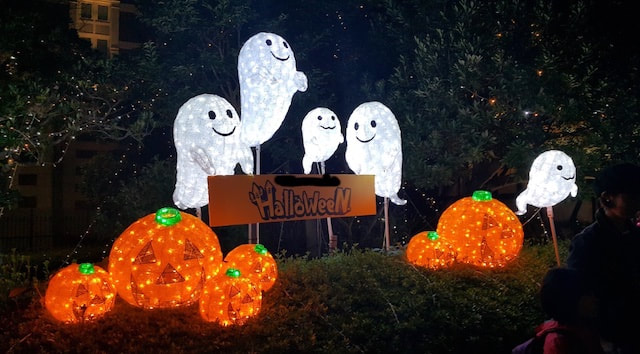
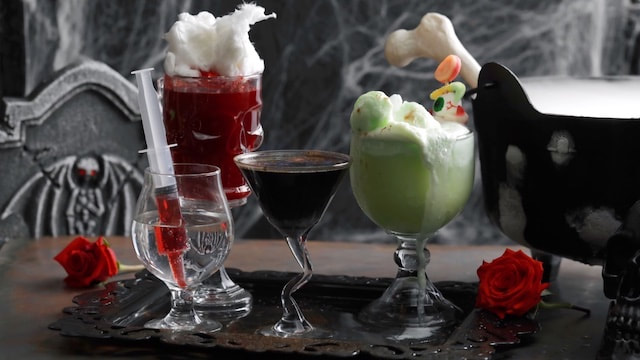
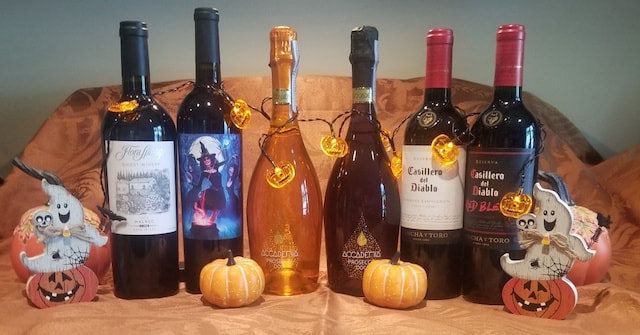
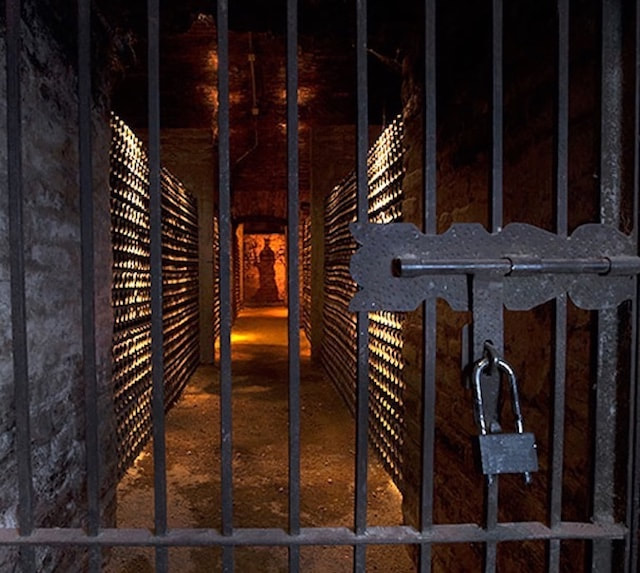
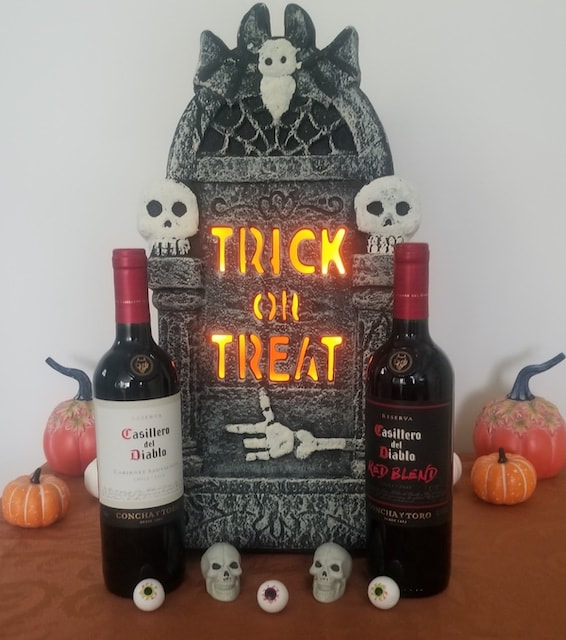
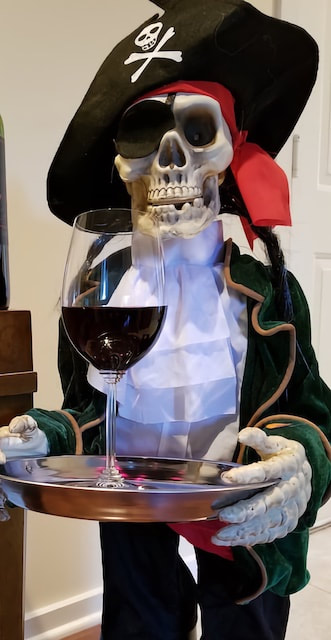
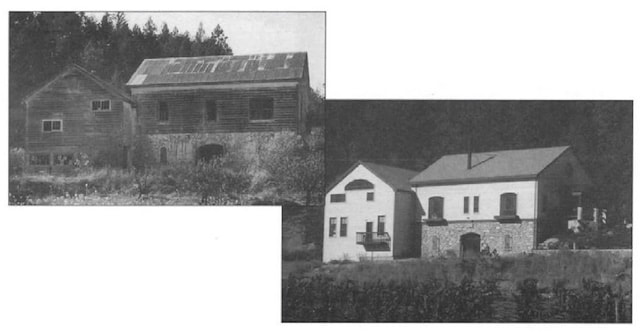
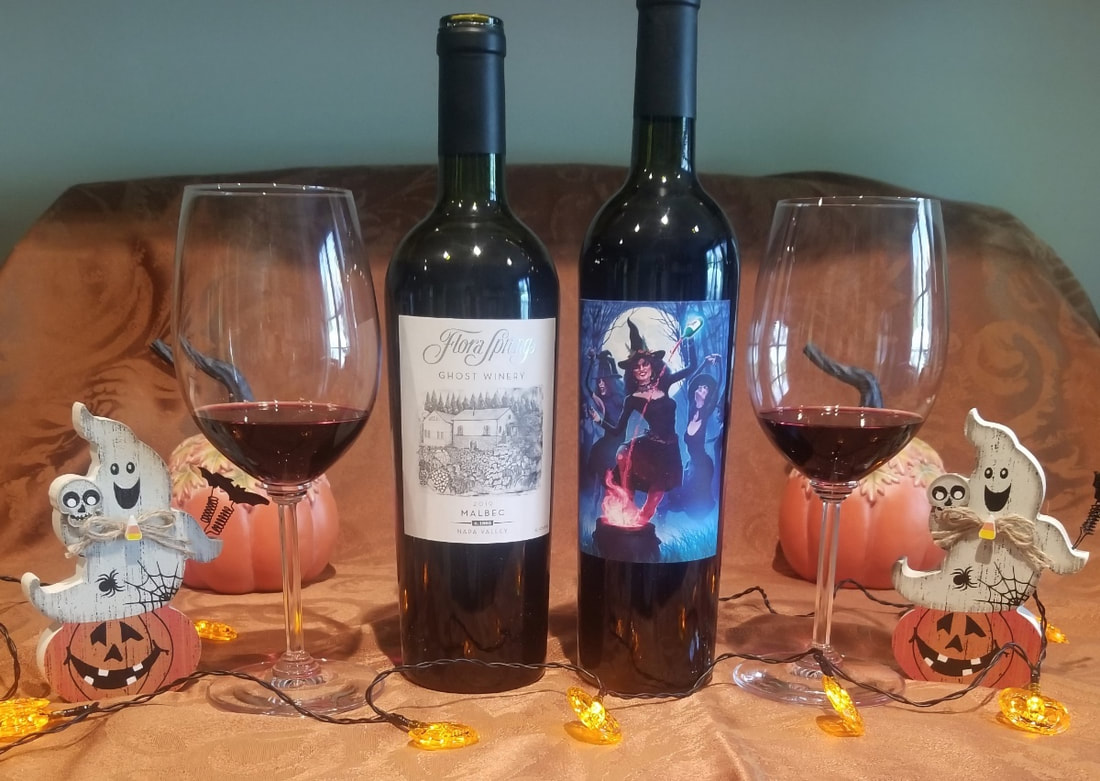
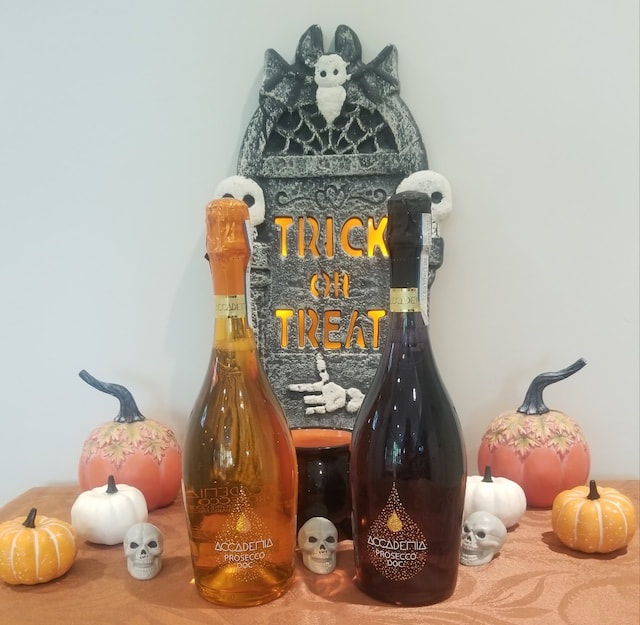
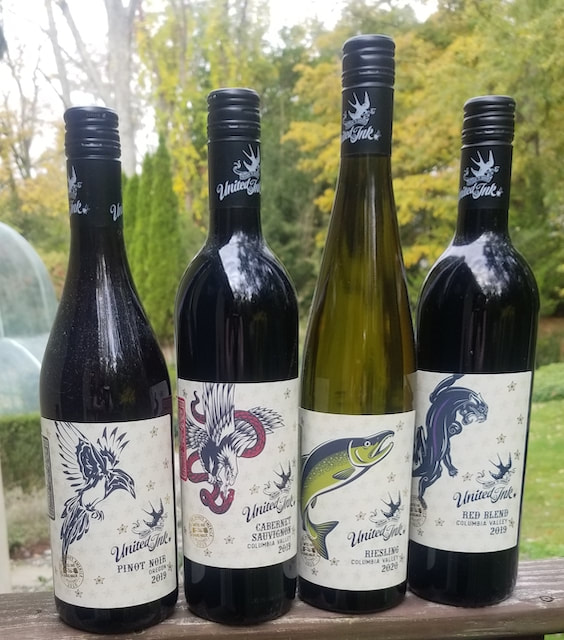
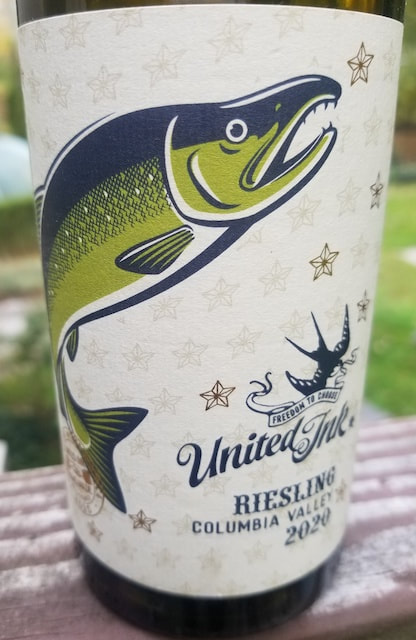
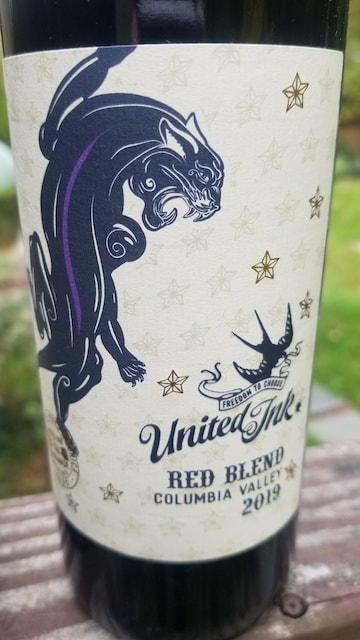
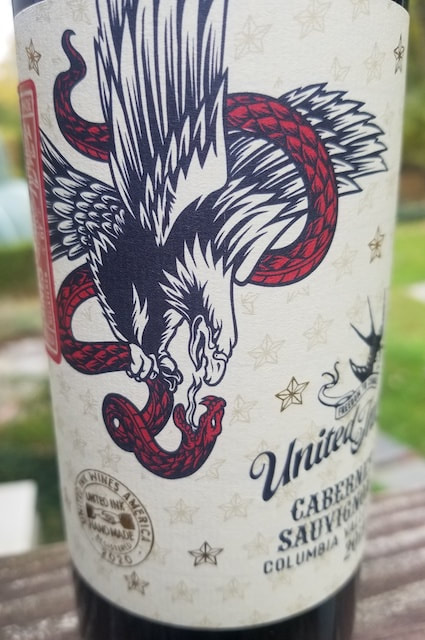
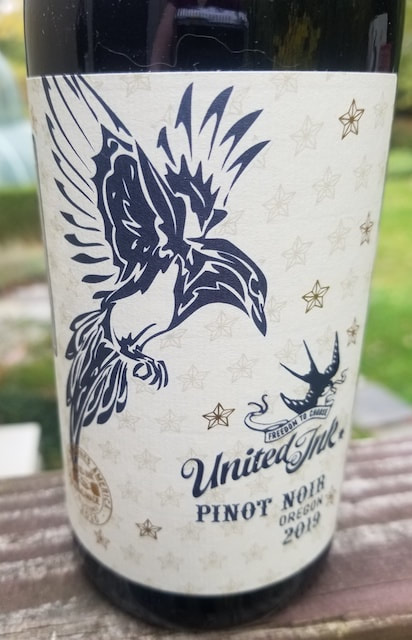
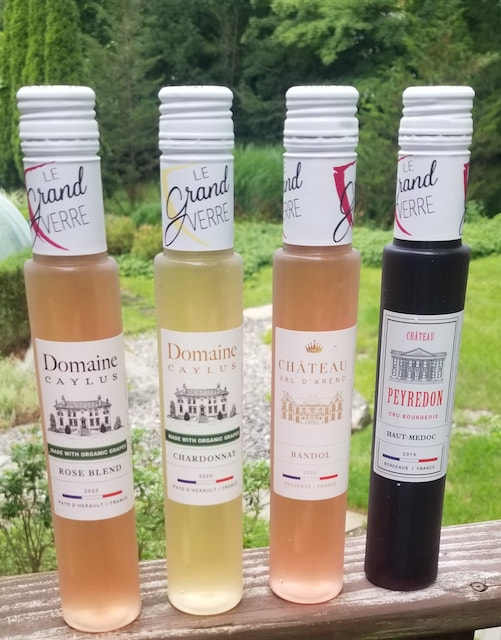
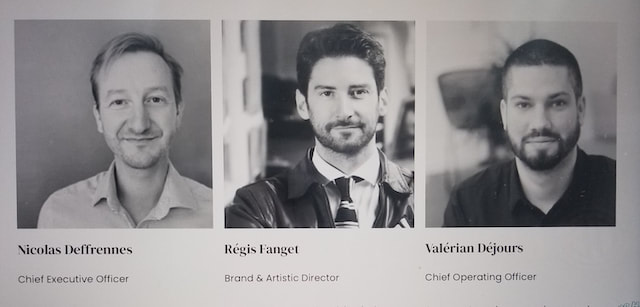
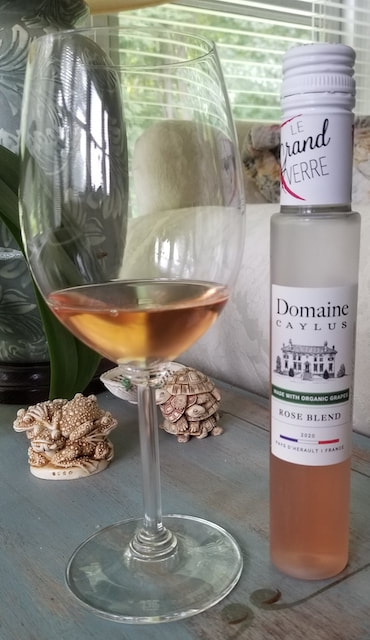
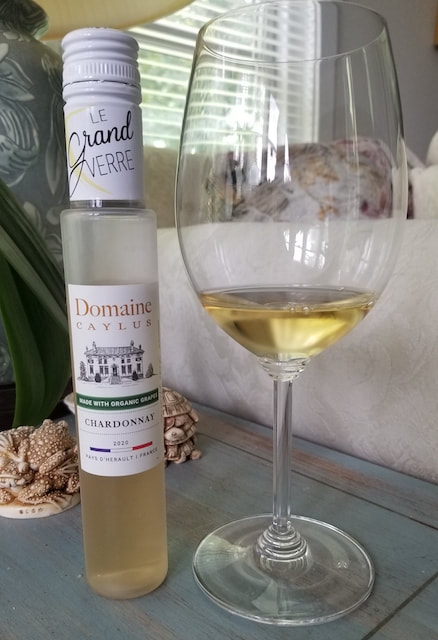
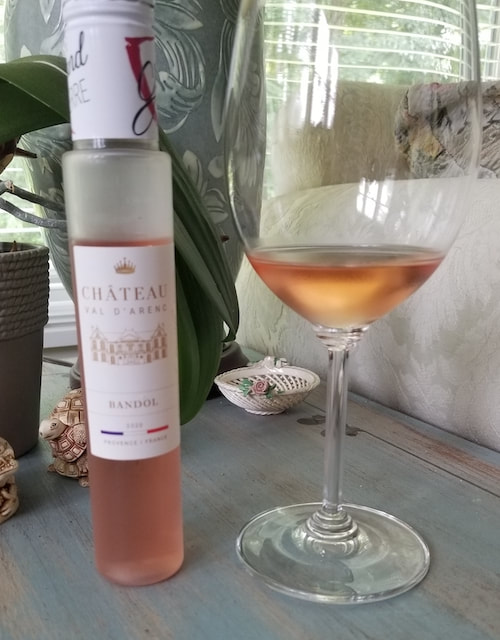
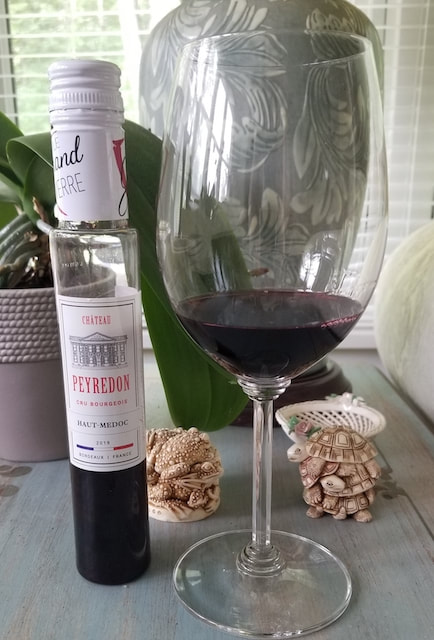
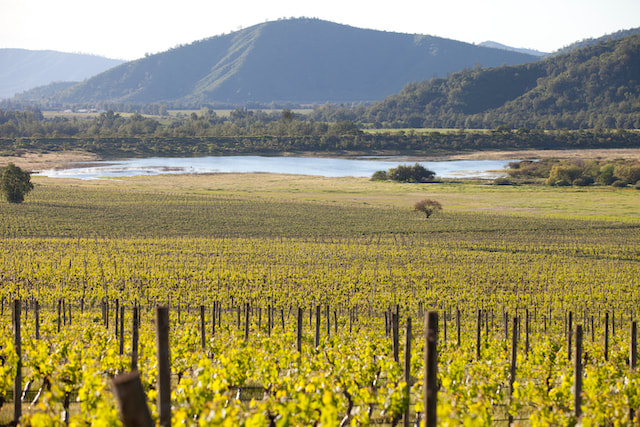
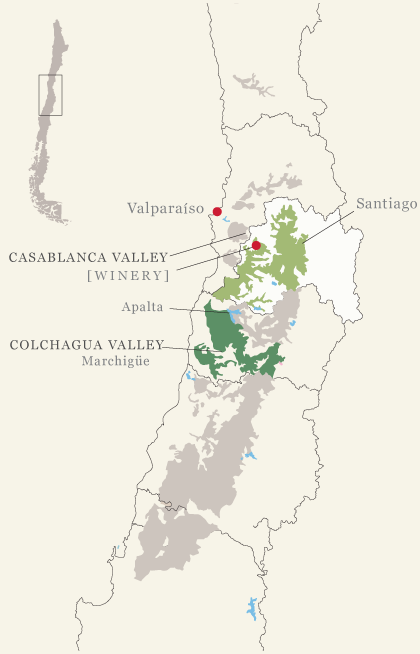
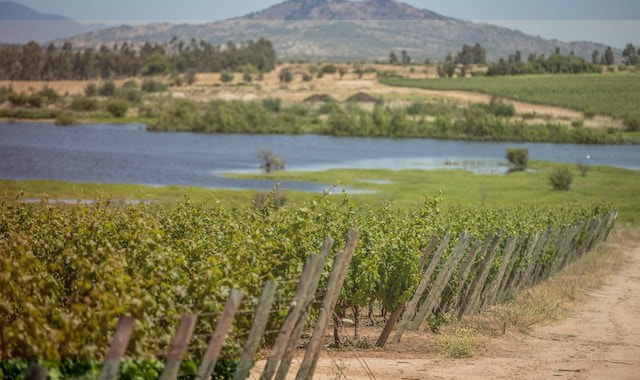
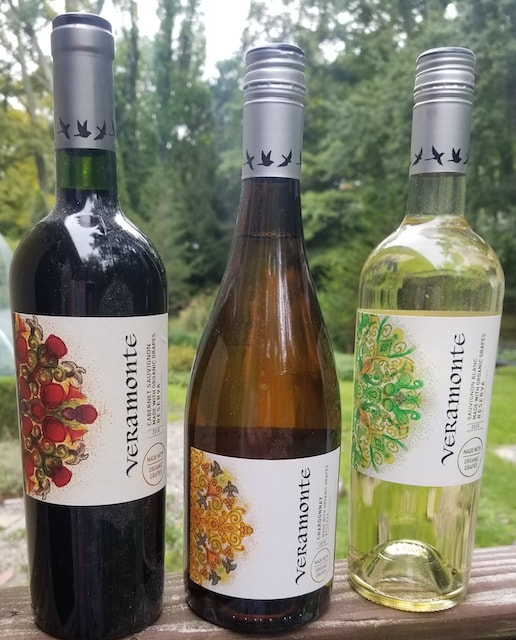
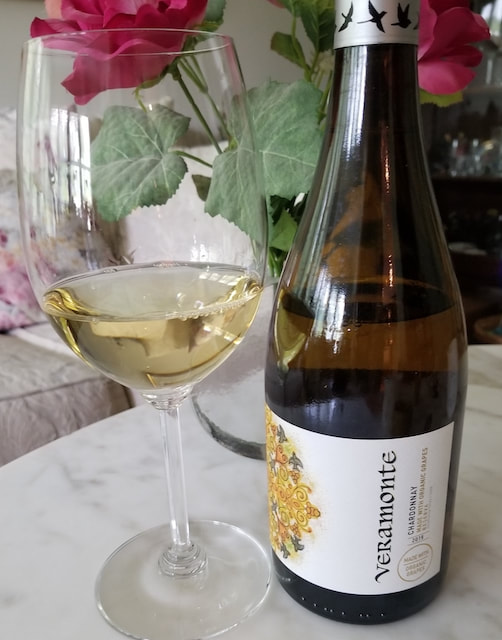
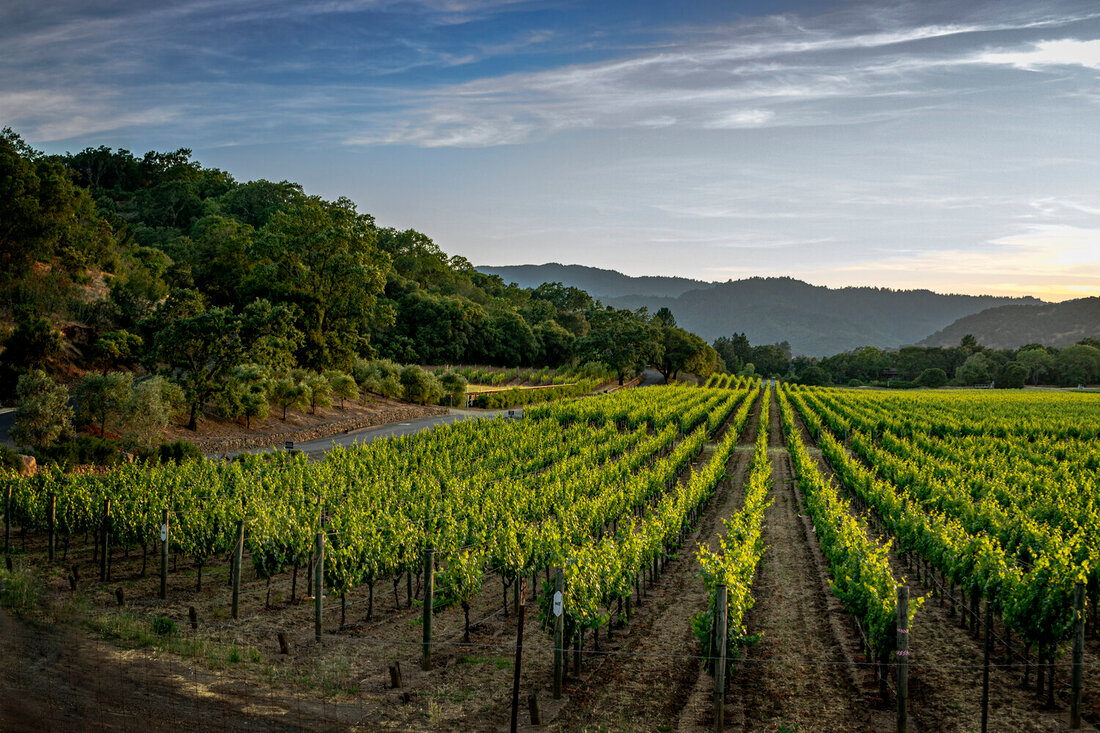
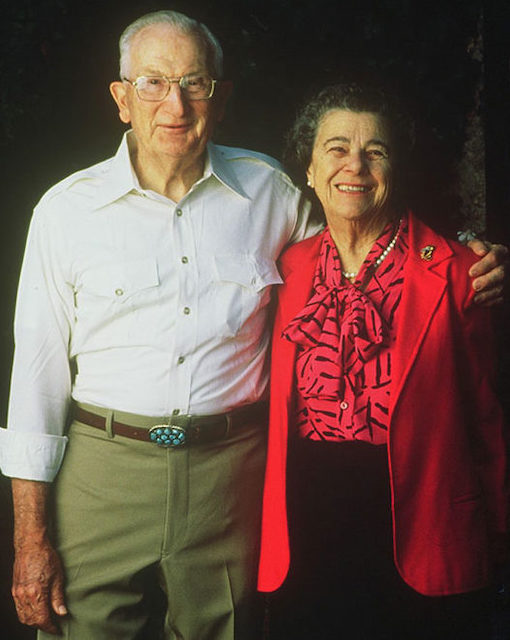
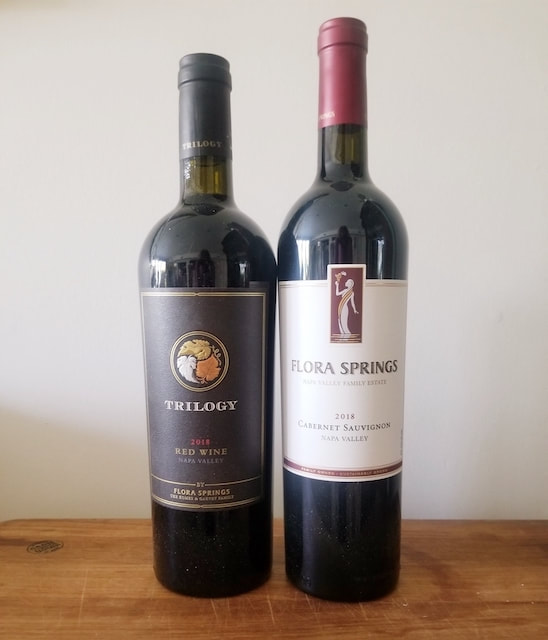
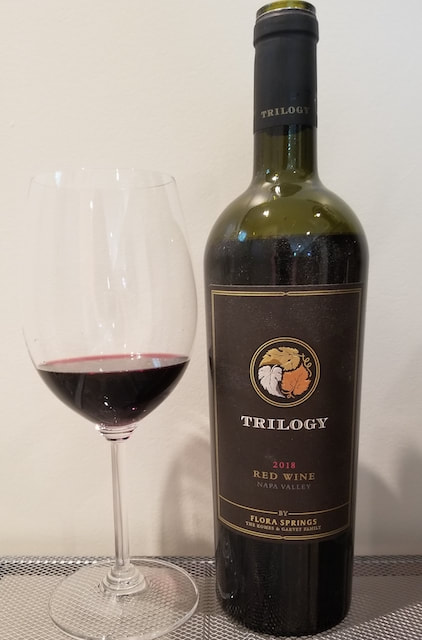
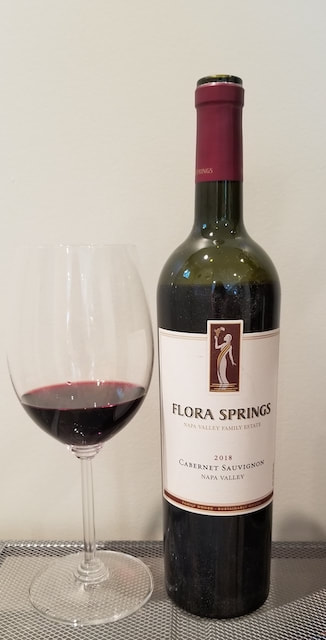
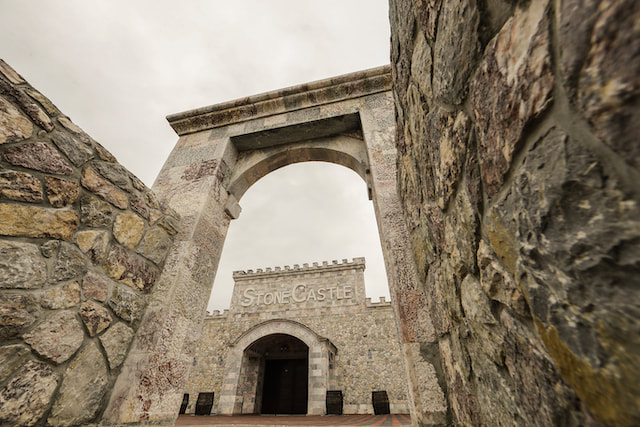
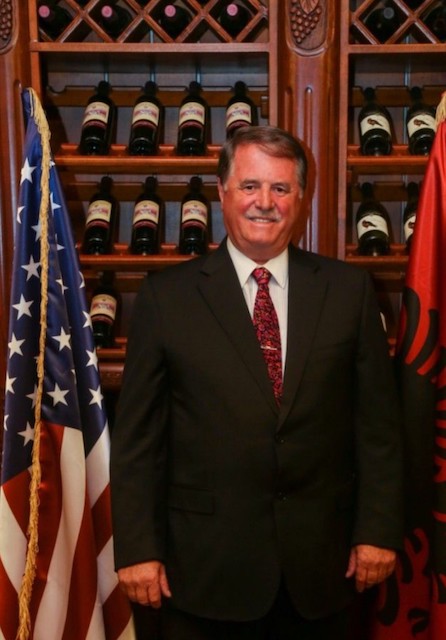
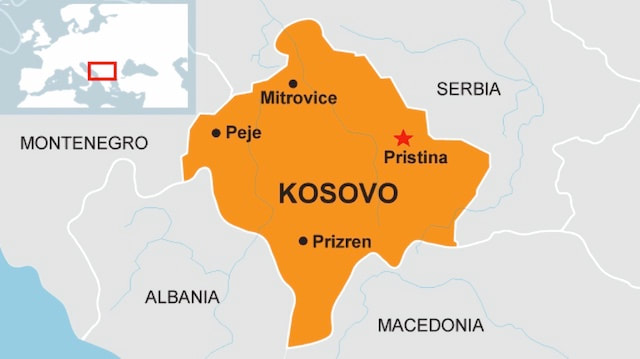
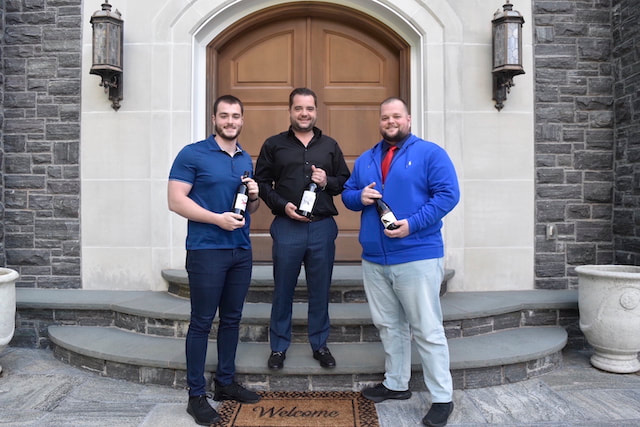
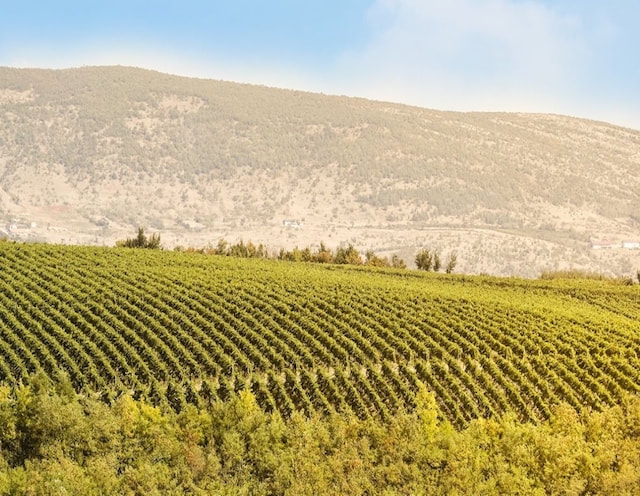
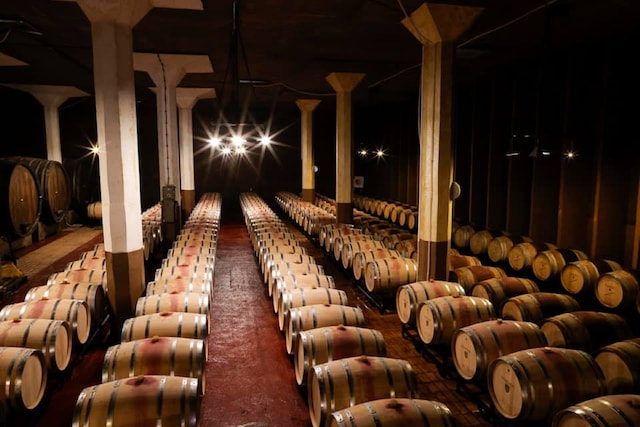
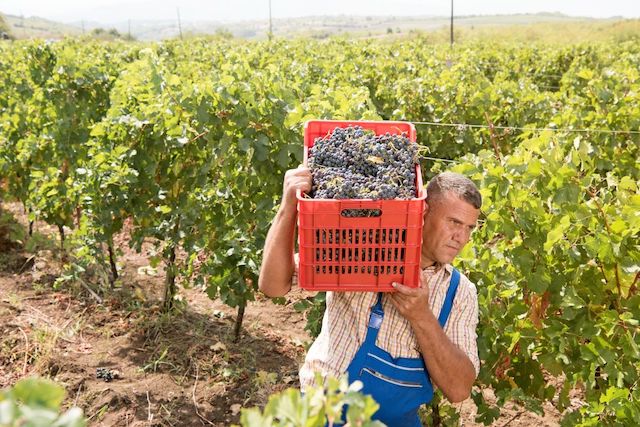
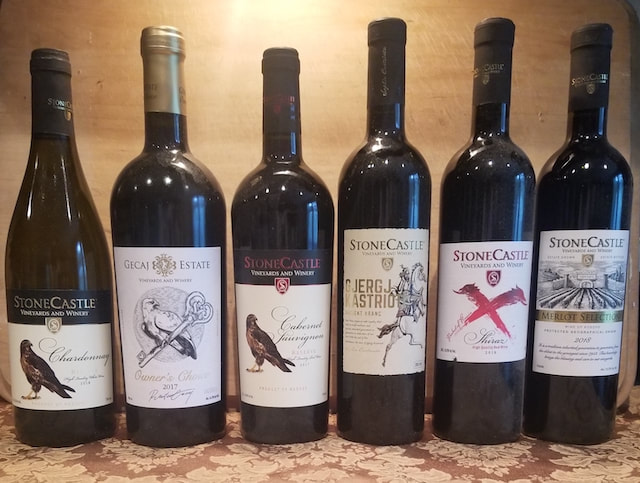
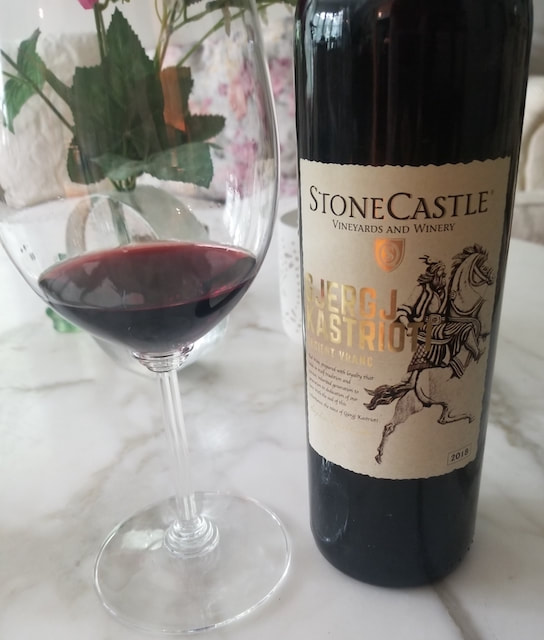
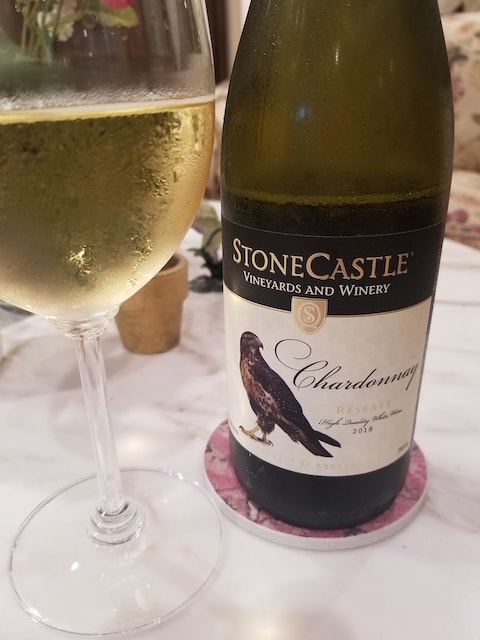
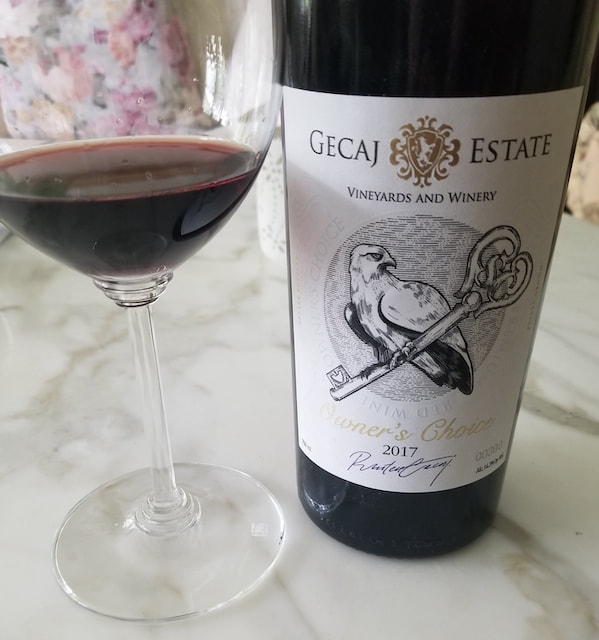
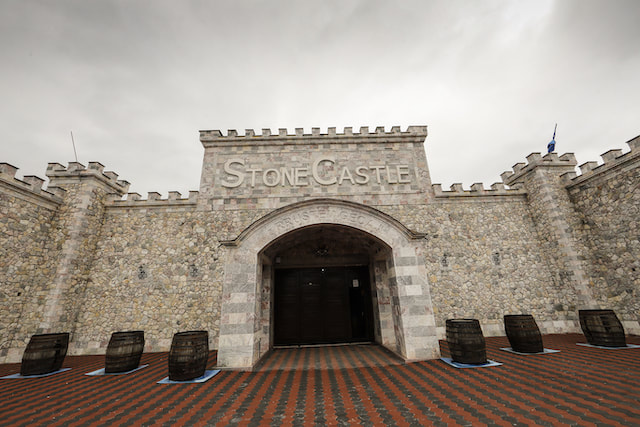
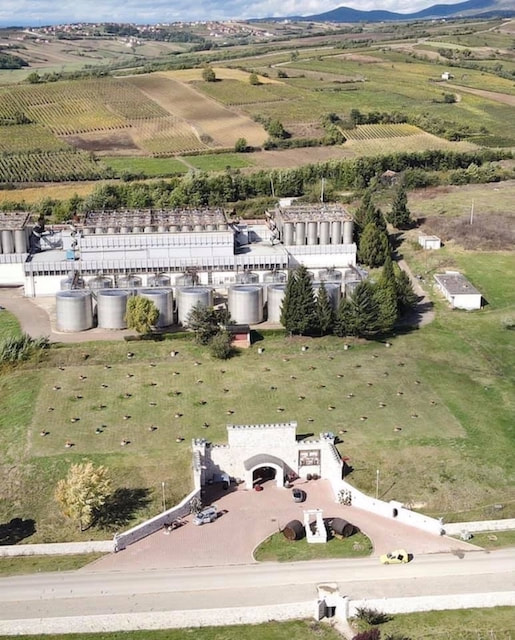
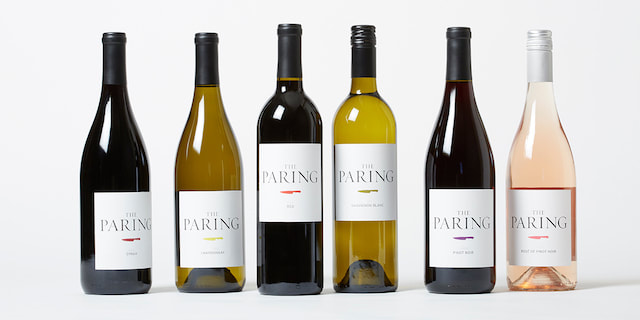
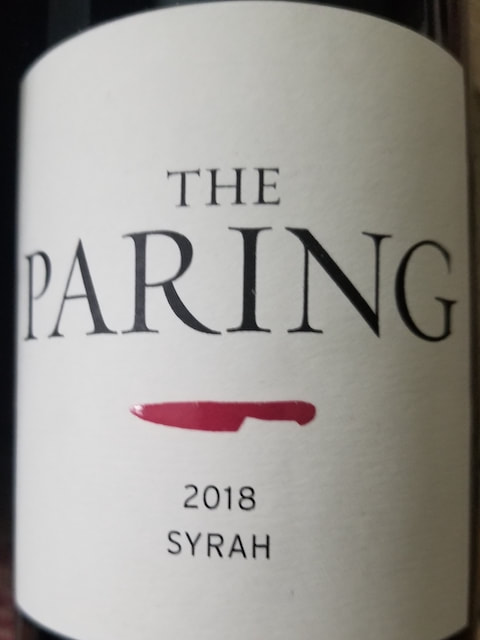
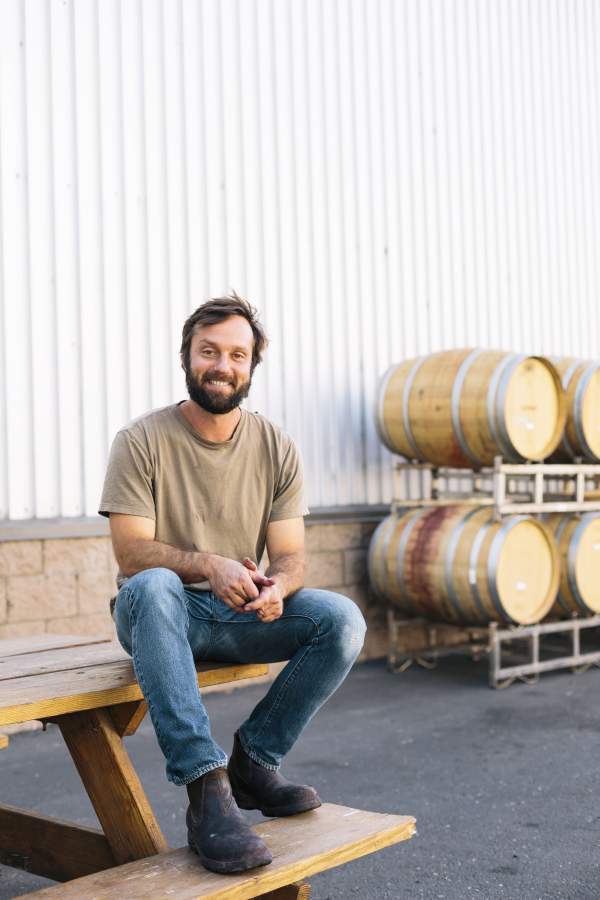
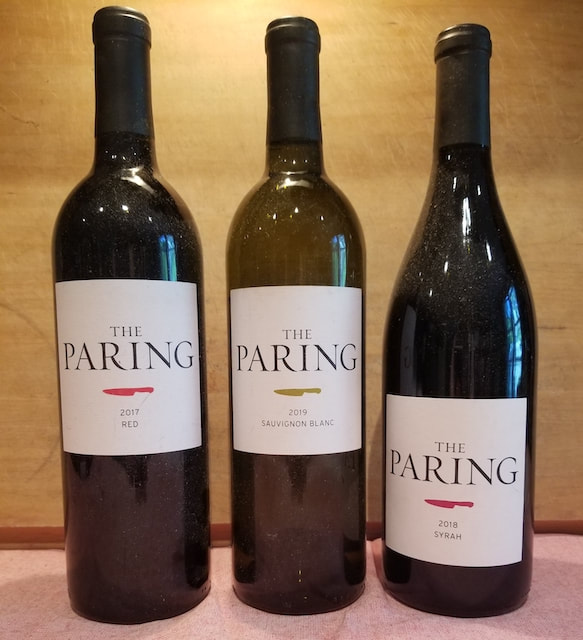

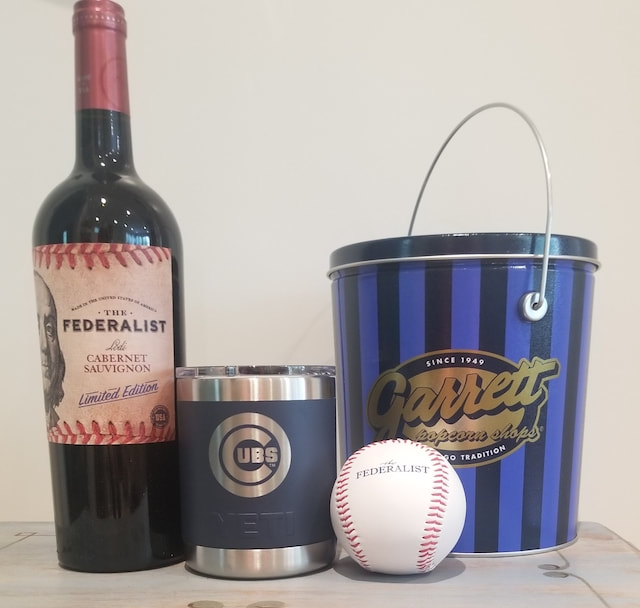
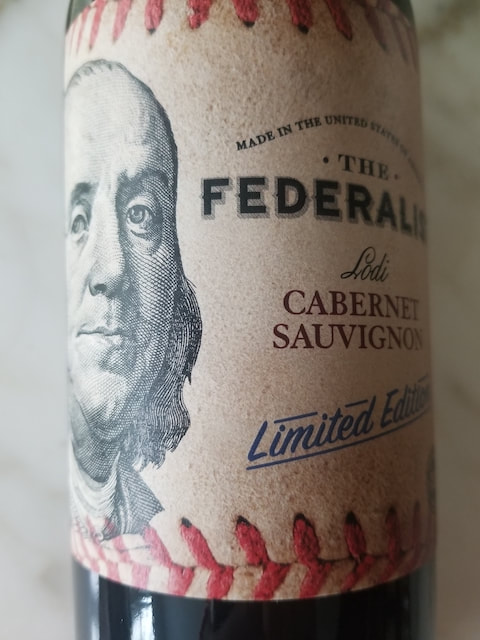

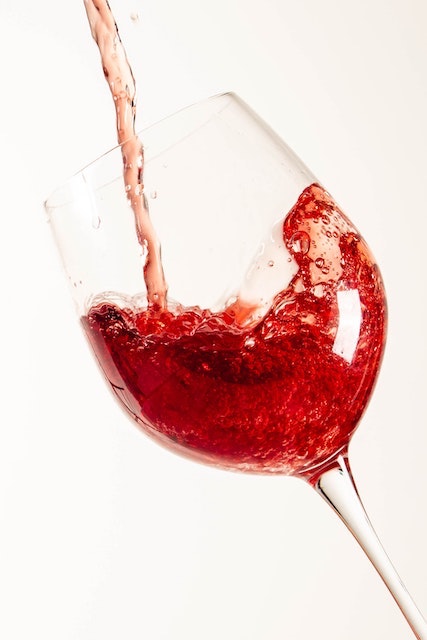
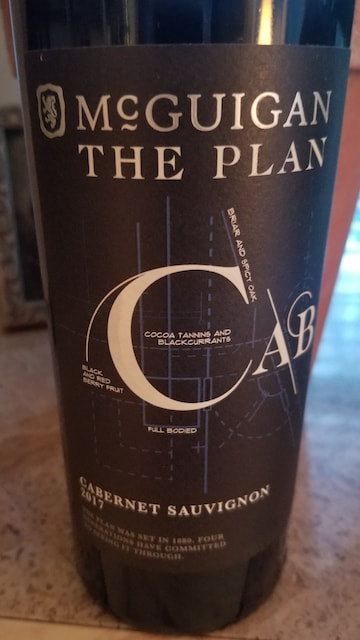
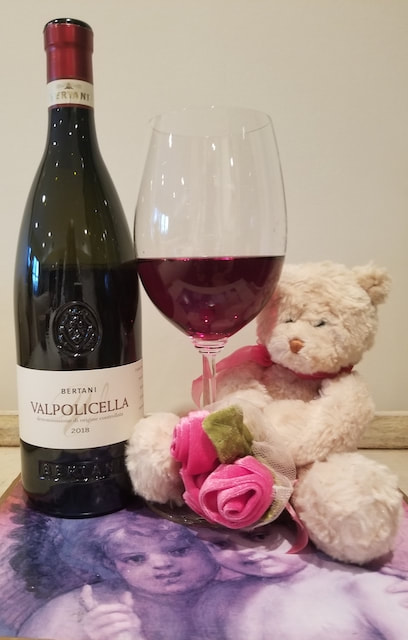
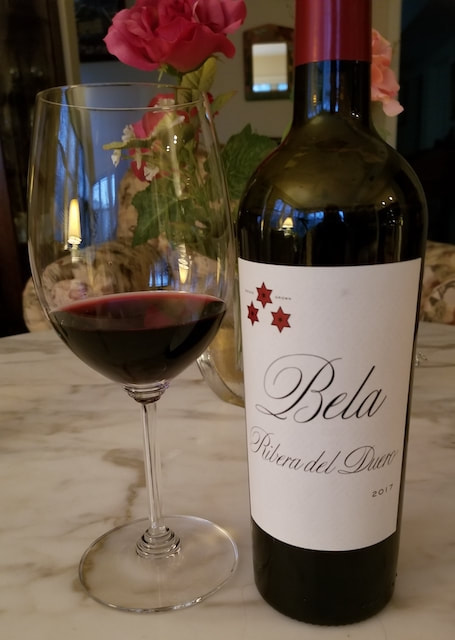
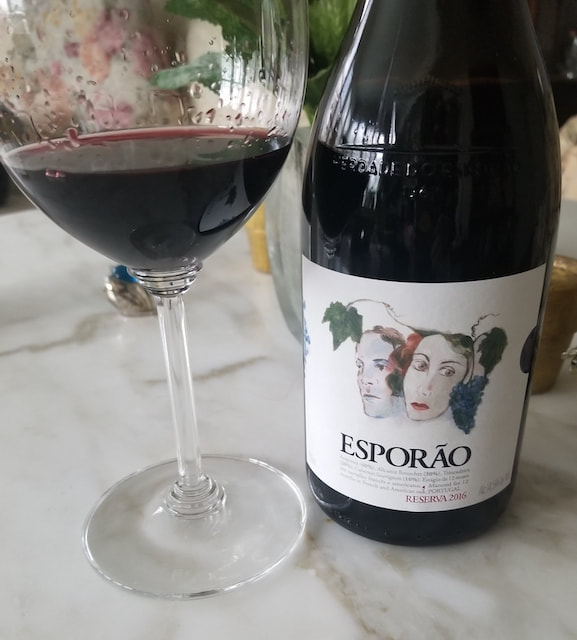
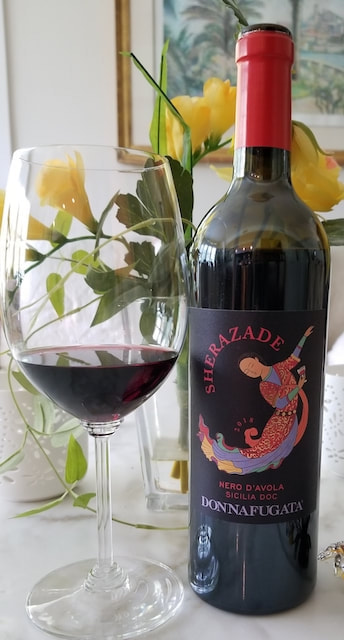
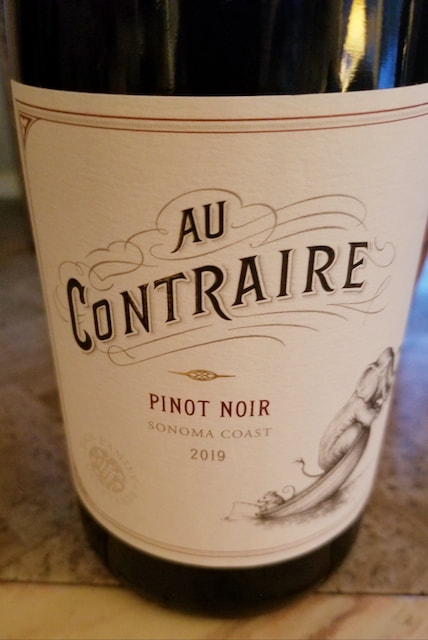
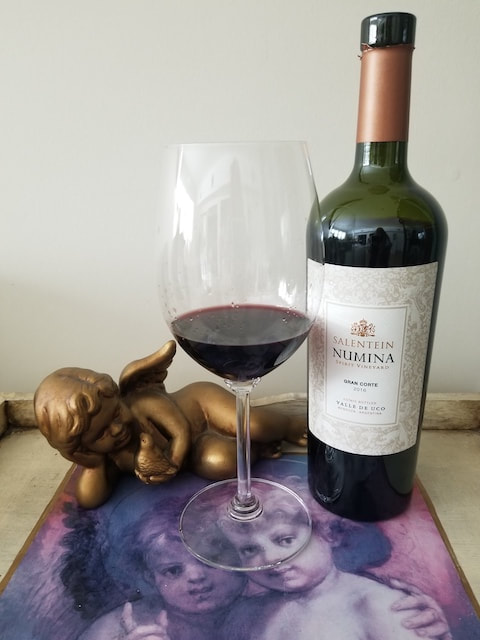
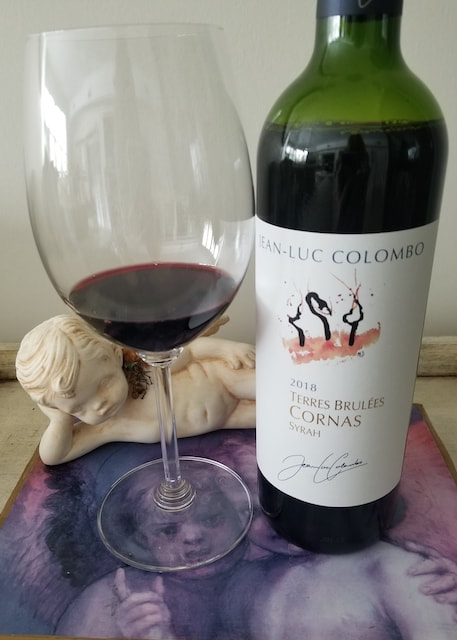
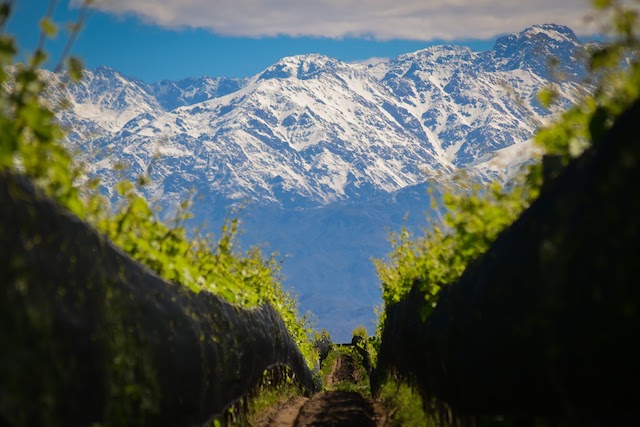
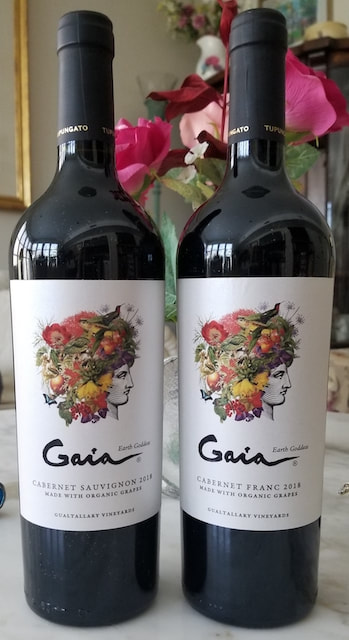
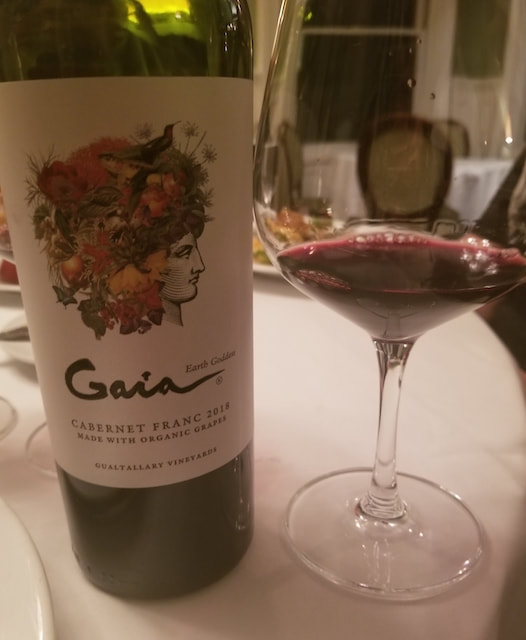
 RSS Feed
RSS Feed